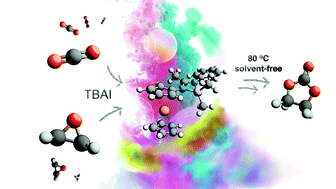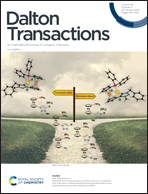Aluminum complexes with new non-symmetric ferrocenyl amidine ligands and their application in CO2 transformation into cyclic carbonates†
Abstract
A set of alkyl aluminum complexes supported by non-symmetric ferrocenyl amidine ligands were used as catalysts for the preparation of cyclic carbonates from epoxides and carbon dioxide using Bu4NI as a co-catalyst. A modified method for the synthesis of aminoferrocene allowed us to obtain this precursor in quantitative yield. Treatment of aminoferrocene with the corresponding acetimidoyl chloride afforded the desired ferrocenyl amidine ligands L1H, (E)-N-(2,6-diisopropylphenyl)-N’-(ferrocenyl)acetimidamide, and L2H, (E)-N-(2,6-dimethylphenyl)-N’-(ferrocenyl)acetimidamide. The reaction of these ligands with 1.0 or 0.5 equiv. of AlMe3 led to the synthesis of aminoferrocene based aluminum complexes ((L1)AlMe2 (1), (L2)AlMe2 (2), (L1)2AlMe (3), and (L2)2AlMe (4)) in excellent yields, which were characterized by spectroscopic and X-ray diffraction methods. In addition, we have studied their electrochemical properties and complex 1 was found to be the most active catalyst for the formation of cyclic carbonates 6a–j from their corresponding epoxides 5a–j and CO2.



 Please wait while we load your content...
Please wait while we load your content...